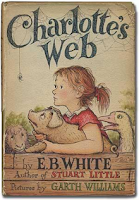If you want to teach philosophy to young people, start with some of Plato's myths, as recounted in his book The Republic. The most potent myth from Plato is the Allegory of the Cave. It's such a vivid metaphor for illustrating a specific type of search for truth — that your students will get it right away and not only enjoy reading the source material with you, but they'll surprise you with their takes on the narratives and connections to the real world.
 | ||
|
If you want to teach philosophy to young people, use this lesson plan that introduces students to Plato’s theory of reality. I was inspired to create this resource when I retold the story of Plato’s Allegory of the Cave (from The Republic) in plain language. In this story, Plato imagines a world where one man wakes up and questions what is real and not real. Have your students read this story with you, and use my handy dandy comprehension questions and discussion activities to lead your students to examine Plato’s metaphysical thinking.
*This resource is optimized for distance learning. The product includes an editable Google Docs link. Modify this resource for use on Google Classroom and other classroom management sites*
This resource includes the following features:
Essential Question: How do I know what is really real?
The text of the story is included in this resource.
The story is retold from the source material in easy-to-understand English. Great for a class read-and-share. Or, have students pair-read the text and then have a whole-class discussion.
15 reading comprehension questions
Useful for homework. To flip the classroom — assign the reading before you plan to discuss and have students complete the reading comprehension questions beforehand.
6 Discussion Questions
Perfect for group work or a carousel activity — get your kids moving while discussing Plato!
1 Chart to Explain Plato’s Two-World Theory
Useful graphic organizer to understand Plato’s worldview
An answer key for both comprehension and discussion questions
Suggested Lesson Plan
With more ideas and instructions on how to use this resource
Bibliography
I use the bibliography as a further reading resource for my students. Assign your curious scholars a research assignment or have students do projects based on books, links, and other material related to Plato they may find interesting or exciting.
Suggested Uses:
Humanities Course on Ancient Greece
World History Course on the History of Ideas
Literature Course
Ethics Course — See how I used this resource in an Ethics class with 8th graders!
Introduction to Philosophy Course
Student Advisory Course on Drug and Alcohol Abuse
A Lesson on Truth
A lesson on Appearance and Reality
Discover More of My Philosophy in the Classroom Series
- Free: Five Resources to Get Young People Thinking About Ethics and Moral Decision-Making
- Want Google Forms with your Plato? — get it here.
- See companion lesson "The Ring of Gyges" - on the uses and misuses of justice from Plato's Republic.
- 5-product Philosophy in the Classroom bundle — Includes this resource plus Ring of Gyges, Nietzsche, Empiricism and Rationalism, and an activity to Discuss any Moral Problem.











